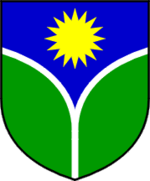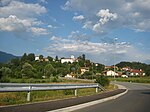Bilje, Miren-Kostanjevica
Goriška statistical region geography stubsPages with Slovene IPAPopulated places in the Municipality of Miren-Kostanjevica

Bilje (pronounced [ˈbiːljɛ]; Italian: Biglia) is a settlement east of Miren in the Municipality of Miren-Kostanjevica in the Littoral region of Slovenia. The hill known as Miren Castle (Slovene: Mirenski grad) rises above the settlement to the south. The parish church in the settlement is dedicated to Saint Anthony the Hermit and belongs to the Diocese of Capodistria.Bilje is the birthplace of sculptor Negovan Nemec and philosopher Dean Komel.
Excerpt from the Wikipedia article Bilje, Miren-Kostanjevica (License: CC BY-SA 3.0, Authors, Images).Bilje, Miren-Kostanjevica
Miren-Kostanjevica
Geographical coordinates (GPS) Address Nearby Places Show on map
Geographical coordinates (GPS)
| Latitude | Longitude |
|---|---|
| N 45.896541666667 ° | E 13.647005555556 ° |
Address
149
5292 Miren-Kostanjevica
Slovenia
Open on Google Maps




